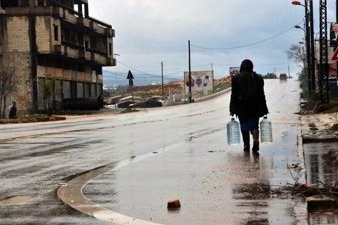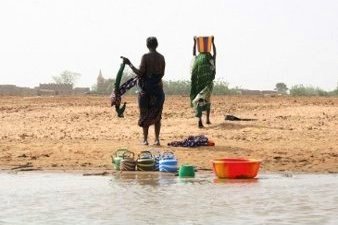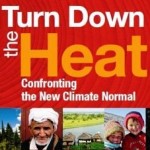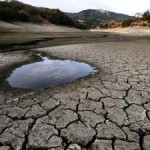 Oakland, California – A new research paper evaluates the role of regional drought, unsustainable water management policies, and climatic conditions in contributing to the severe conflict in Syria in the past few years.
Oakland, California – A new research paper evaluates the role of regional drought, unsustainable water management policies, and climatic conditions in contributing to the severe conflict in Syria in the past few years.
The paper, titled “Water, Drought, Climate Change, and Conflict in Syria” by Dr. Peter H. Gleick, coming out in the July issue of the American Meteorological Society journal Weather, Climate, and Society, concludes that the many factors influencing the severe violence in Syria include long-standing political, religious, and social ideological disputes; economic dislocations from both global and regional factors; and the consequences of water shortages influenced by drought, ineffective watershed management, and the growing influence of climate variability and change.
Improvements in water use efficiency and productivity in agriculture, better management and monitoring of groundwater resources, and comprehensive international agreements on managing and sharing the rivers that cross political borders are key to mitigating these risks.
Starting in 2006 and lasting through 2011, Syria suffered the worst long-term drought and the most severe set of crop failures in recorded history. The decrease in water availability, water mismanagement, agricultural failures, and related economic deterioration contributed to population dislocations and the migration of rural communities to nearby cities. These factors further contributed to urban unemployment, economic dislocations, food insecurity for more than a million people, and subsequent social unrest.
There is a long history of conflicts over water in the Middle East. The region experiences high natural variability in precipitation and suffers from a lack of modernized agricultural and water management systems. Less than one-fifth of Syria’s irrigated area uses modern sprinklers or drip irrigation. Half of all irrigation water comes from groundwater systems, which are in a condition of overdraft, leading to dropping groundwater levels and rising production costs.
Water use and the construction of large water infrastructure upstream by Turkey have also decreased surface water supplies flowing into Syria. Populations have grown rapidly, further stressing limited water supplies. All of these factors were worsened by the severe multi-year drought.

The paper also assesses the role of climatic changes in altering water availability, with growing evidence that drought frequency and intensity in the Levant/Eastern Mediterranean region have changed from historical climatic norms. Researchers have identified an increasing tendency in annual and seasonal drought intensity corresponding with an increasing number of dry days in the rainy season, and there is evidence that climate changes are already beginning to influence droughts in the area by reducing winter rainfall and increasing evapotranspiration at rates higher than can be explained by natural variability alone.
Future climate projections for this region are also unfavorable from the perspective of water availability. Recent climate simulations all indicate growing water-related risks from higher temperatures, increased evaporative water demands, reductions in future runoff levels, and changes in the timing of runoff.
The paper concludes with options for reducing the risks of water-related conflicts in the region, including expansion of efficient irrigation technologies and practices, integrated management and monitoring of groundwater resources, and diplomatic and political efforts to improve the joint management of shared international watersheds and rivers.
Dr. Peter Gleick is president of the Pacific Institute, a member of the U.S. National Academy of Sciences, a MacArthur Fellow, and an expert on water, climate, and conflict.
Check the following link to read/download the Full Study:
http://journals.ametsoc.org/doi/abs/10.1175/WCAS-D-13-00059.1
Source: Pacific Institute.
The Pacific Institute is one of the world’s leading independent research centers working to create a healthier planet and sustainable communities. Based in Oakland, California, the Institute conducts interdisciplinary research and partners with stakeholders to produce solutions that advance environmental protection, economic development, and social equity – in California, nationally, and internationally. For more information, visit www.pacinst.org.














